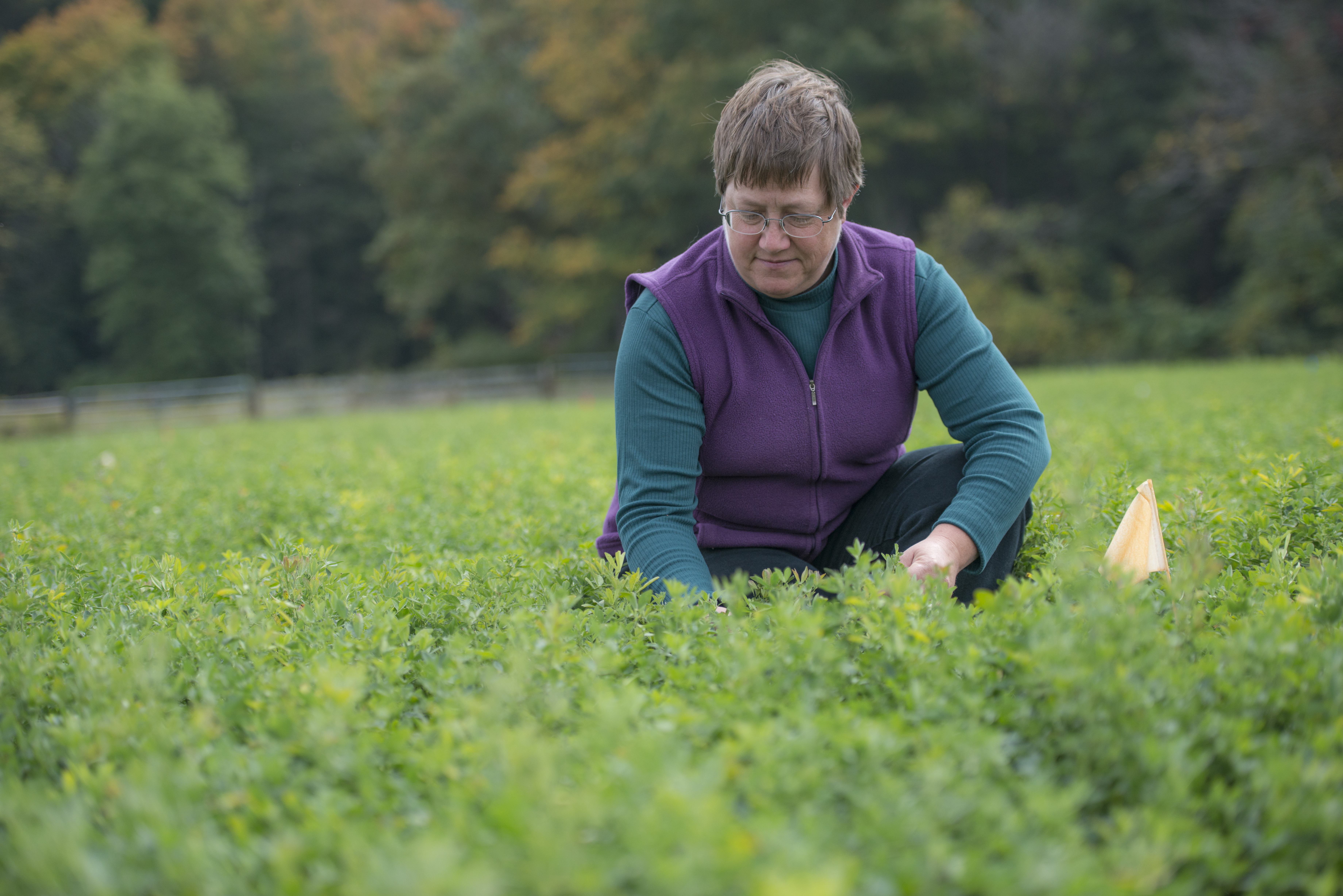MSU-led research team receives $946K grant to study alfalfa autotoxicity
The project is funded by USDA NIFA's Alfalfa Seed and Forage Systems program.

EAST LANSING, Mich. — A multi-institutional research team led by Michigan State University has received a $946,349 grant from the U.S. Department of Agriculture’s (USDA) National Institute of Food and Agriculture (NIFA) to explore alfalfa autotoxicity. The award is within NIFA’s Alfalfa Seed and Forage Systems program.
The project is led by Kim Cassida, an associate professor in the MSU Department of Plant, Soil and Microbial Sciences and MSU Extension forage specialist. Other researchers include:
- Sarah Lebeis, an assistant professor in the Department of Plant, Soil and Microbial Sciences.
- Paige Baisley, a graduate student in Cassida’s lab.
- Virginia Moore, an assistant professor in the School of Integrative Plant Science at Cornell University.
According to the USDA’s National Agricultural Statistics Service, alfalfa is the nation’s third most valuable field crop at roughly $8.7 billion per year. While alfalfa has many uses, it’s most often grown for animal agriculture forage due to its nutrient-rich profile.
Like any other crop, alfalfa faces insect and diseases challenges, but current varieties are exceptionally hardy and able to withstand a variety of environmental pressures. Its most significant threat may be itself.
Alfalfa exhibits autotoxicity, a phenomenon in which the plant inhibits germination and development of seedlings of its own species. The cause is believed to be chemical compounds released by the plants, but researchers are unsure which compounds are to blame.
“We’ve known about this issue for a long time, but there haven’t been any concrete solutions generated,” said Cassida, whose work is also supported in part by MSU AgBioResearch. “Alfalfa is a tremendously valuable crop for Michigan, the U.S. and beyond, so finding answers to the problem of autotoxicity is extremely important. In my role as an MSU Extension specialist, I work directly with farmers, and I want to be able to give them more prescriptive recommendations.”
Cassida said managing autotoxicity in the field can be tricky. Alfalfa stands are typically productive for four or more years, but as the plants begin to age and thin out, growers can’t simply add new seedlings to fill the gaps.
Current recommendations are to rotate with other crops, waiting to let toxins dissipate before replanting alfalfa. But the risk of lingering autotoxicity varies greatly by conditions such as precipitation and soil type, as well as management decisions such as tillage.
“When I talk to growers, one of the most common questions I get is, ‘Has it been long enough to replant alfalfa?’” Cassida said. “We tell growers to wait at least six months to two years depending on all the contributing factors, but that uncertainty is frustrating.
“To bring more certainty into the fold, we are developing a soil bioassay that will eventually be available through MSU Plant & Pest Diagnostics that can let a grower know whether the soil is ready to plant alfalfa again. At this point, we still can’t tell them exactly how long it will take their field to recover if it’s not ready, but we’re looking to improve the bioassay through this work.”
For the new project, researchers have four primary objectives:
- Identify the compounds responsible for autotoxicity.
- Determine how root function and soil microbiology interact with factors such as soil fertility to influence chemical development and release.
- Begin the process of breeding alfalfa varieties that do not cause this problem.
- Communicate with growers via MSU Extension education.
The end goal is to pave the way for developing new varieties that either produce less toxins or are able to tolerate them more effectively. Cassida said this research could also serve as a framework for other crops with autotoxicity issues.
Preliminary efforts to develop the bioassay were supported by Project GREEEN and the U.S. Alfalfa Farmer Research Initiative, a checkoff program funded by alfalfa growers to support research. While the bioassay is not ready to share with growers yet, it will be used as a research tool.
“We need to do greenhouse work to identify the mechanisms of autotoxicity before we can take this to field scale,” Cassida said. “Once we do that, we can start to examine things like the effects of nutrient stresses in test plots. The bioassay gives us the ability to definitively identify research plots or production fields that exhibit the problem and focus on differences between those and non-toxic plots or fields. This should improve our ability to conclusively identify causal compounds and interactions among environmental or management factors that impact the severity of the problem.”
Michigan State University AgBioResearch scientists discover dynamic solutions for food systems and the environment. More than 300 MSU faculty conduct leading-edge research on a variety of topics, from health and climate to agriculture and natural resources. Originally formed in 1888 as the Michigan Agricultural Experiment Station, MSU AgBioResearch oversees numerous on-campus research facilities, as well as 15 outlying centers throughout Michigan. To learn more, visit agbioresearch.msu.edu.



 Print
Print Email
Email




